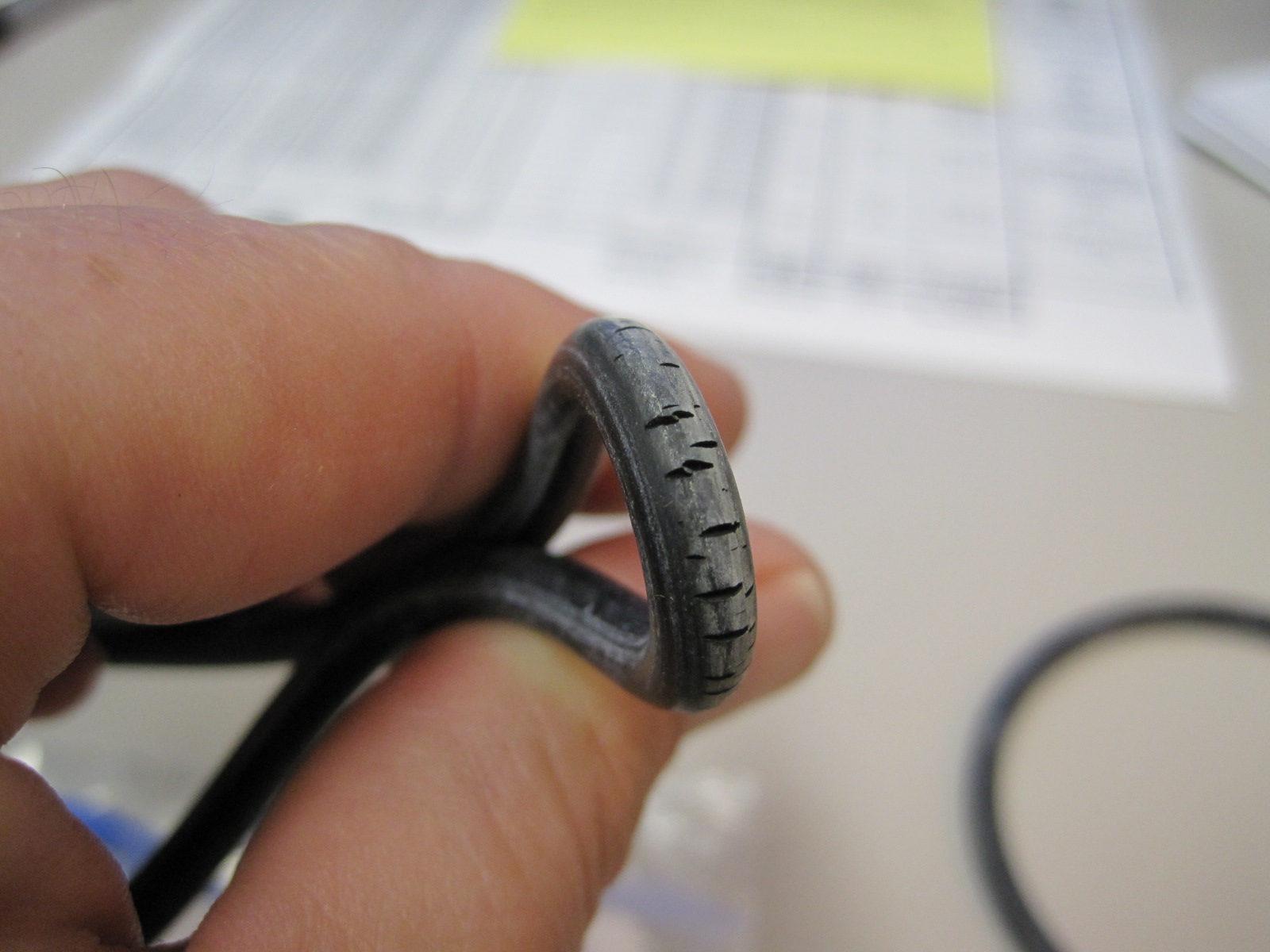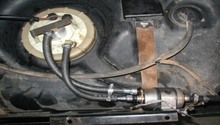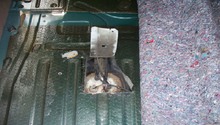Jeep Cherokee 1984-2001: Why is There Gas Smell Coming From My Car?
A constant fuel odor can be nauseating to you and your passengers. More importantly, the smell of gas emanating from your Jeep Cherokee may be a sign of a fuel leak and should be inspected immediately.
This article applies to the Jeep Cherokee XJ (1984-2001).
Since the introduction of emission standards, fuel vapors are not to be vented to the atmosphere, but instead contained within the vehicle and eventually burned inside of the engine. Unfortunately, components wear or fail and can leave the cabin of your XJ Jeep Cherokee smelling like an old gas can. Many of the components of the fuel system use rubber to transfer fuel as well as seal off fuel vapors. A downfall of rubber, especially when it is in contact with gasoline for many years, is that it can deteriorate, becoming brittle and crack. While these rubber components may not leak fuel, they are susceptible to venting fuel vapors. As a result, vapors from under the hood or underbody can creep into the cab and make driving your Cherokee unbearable. With gasoline being flammable, it is important to take time and properly identify the source of the leak to prevent a potential fire or accident. This article will outline some common areas that leak fuel or vent fuel vapors and cause the XJ Jeep Cherokee to smell like gas.

Materials Needed
- Metric/American wrenches and sockets
- Ratchet and extensions
- Screwdriver
- Floor jack and jack stands
- Shop rags
Step 1 – Inspect fuel cap and filler neck
A pungent gas smell is regularly caused by fuel vapors leaking passed a faulty fuel cap or damaged filler neck.
-
Inspect the condition of the fuel cap. Pay close attention to the O-ring. A cracked or dried out O-ring will not properly seal against the filler neck and keep fuel vapors from escaping the fuel tank.
- Inspect the filler neck and filler hose assembly. A cracked filler neck can vent fuel vapors to the atmosphere. Similarly, the rubber hoses are extremely susceptible to weathering and are prone to split as well as crack. This is especially true on older XJ models.
-
Inspect the condition of the fuel tank vent hose. This hose runs parallel to the filler hose and is equally prone to failure, resulting in excessive fuel vapors escaping the tank.


Step 2 – Inspect fuel filter and fuel pump
-
Inspect the connections at the fuel filter located on the inside of the driver's side frame rail. Hard lines are susceptible to corrosion and the rubber hoses can break down over time. Check that all connections are tight, especially if the filter was recently changed.
-
The fuel pump assembly located on the top side of the fuel tank has various lines that circulate fuel. Additionally, there is a rubber seal between the fuel pump assembly and fuel tank to prevent leaking fuel. As with other rubber components, these are also prone to drying out and cracking.


Step 3 – Inspect vapor canister
The vapor canister, also know as a charcoal canister or EVAP canister, is a component of the evaporative emissions system that catches and stores fuel vapors from the fuel tank until they are able to be inserted into the engine and burned during combustion.
-
The vapor canister is located just in front of the rear axle. As has been the theme, the connections to the canister are rubber and are prone to failure. Cracked or deteriorated hoses will allow fuel vapors to vent to the atmosphere. Since the canister is directly under the car, owners often complain that the cab begins to smell like gas, especially during warm weather.

Step 4 – Inspect fuel rail
Leaks at the fuel rail and fuel injectors are common on XJ Cherokee models. They can be difficult to spot since underhood temperatures can quickly vaporize small fuel leaks and only leave a strong fuel odor behind. When inspecting for leaks, it is usually a good idea to turn the key to the on position without starting the car to let the fuel system pressurize. This pressurization can allow small leaks to show themselves and will not evaporate as quickly with the engine off.
-
Inspect the inlet and outlet lines running to the fuel rail. Check that the connections are firmly seated and the lines are in good condition.
-
If the fuel rail is equipped with a damper, be sure to inspect it for signs of wetness or heavy fuel vapors.
-
Look for signs of fuel leaks at the injectors. Check both the injector to fuel rail connection and where the injectors meet the intake manifold. More often than not, the injector O-rings will fail and fuel will puddle near the injector base on the manifold. The O-rings are replaceable and do not require installation of a new injector.
-
Depending on the year model, the fuel pressure regulator will be attached to the fuel rail as opposed to being part of the fuel pump assembly. An external fuel pressure regulator can be easily inspected for signs of leaking fuel.




Related Discussions
- Gas Smell in Cabin - CherokeeForum.com
- HELP! My Jeep Smell Like Gas - CherokeeForum.com
- Gas Smell - CherokeeForum.com






